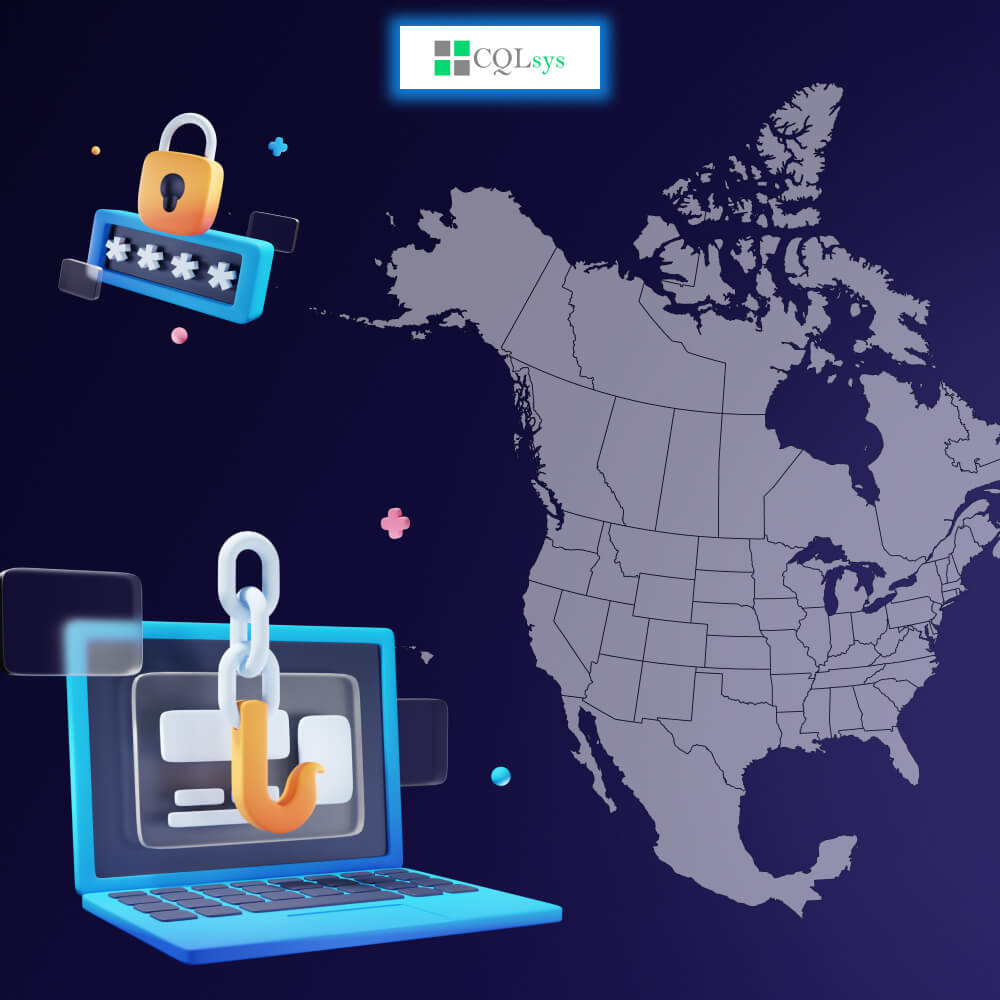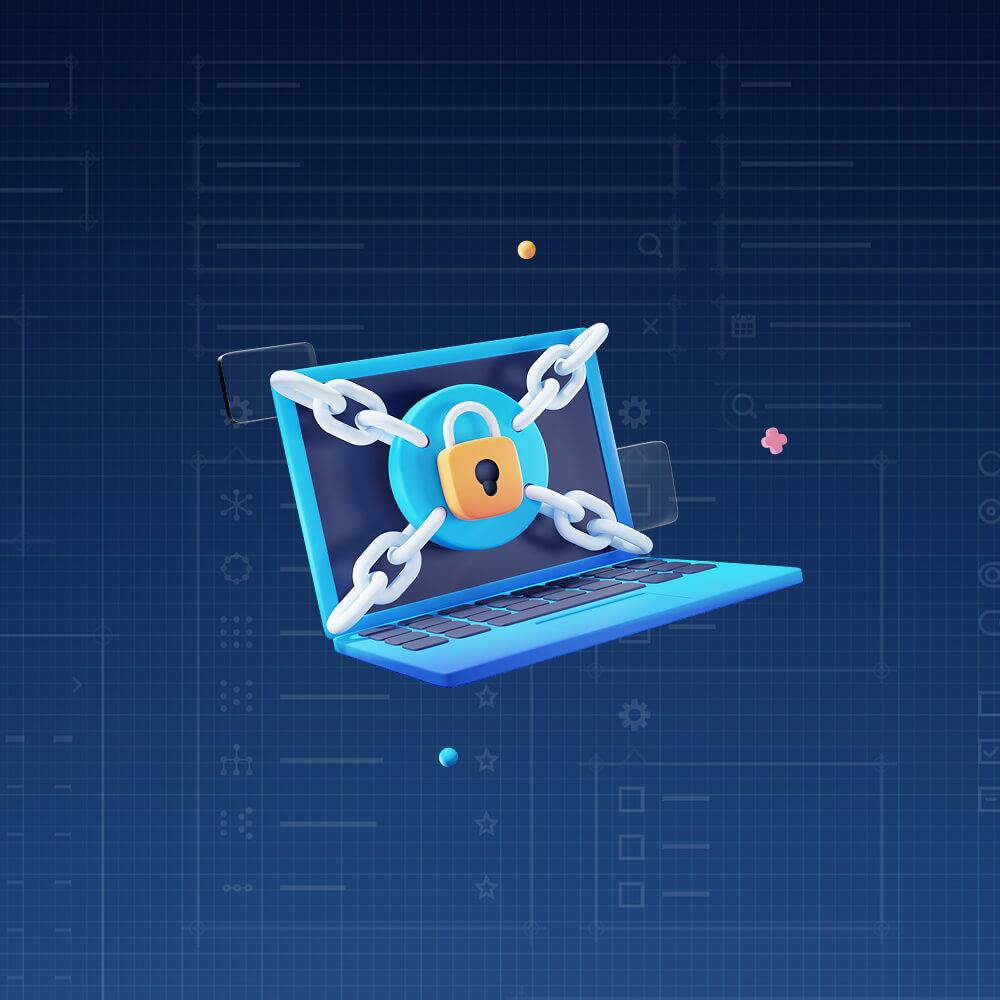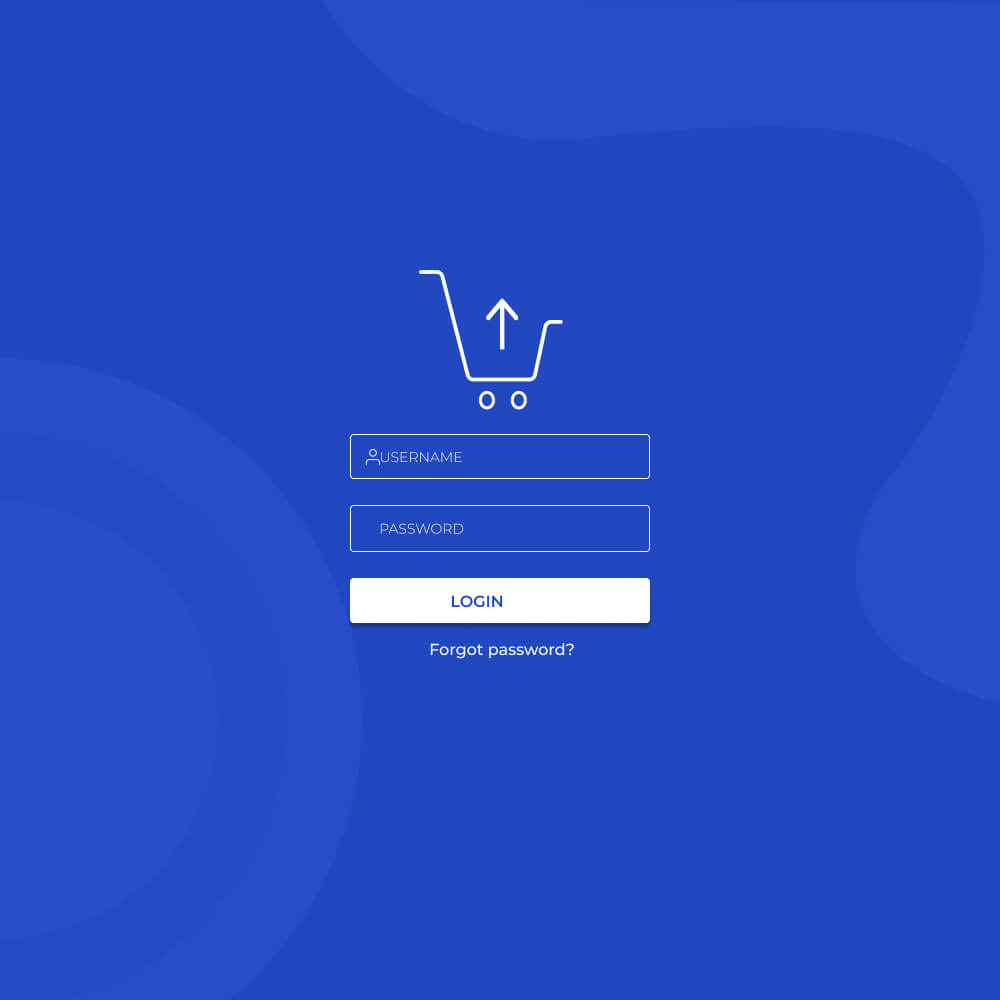On-Demand App Security in 2025: Protecting Your Business from the Growing Threat of Cybercrime (USA, Canada, Europe Focus)

The on-demand economy isn't just a trend; it's the future. From getting your groceries delivered to hailing a ride in minutes, millions across the USA, Canada, and Europe rely on these seamless, intuitive apps every single day. As an application development company, we've seen firsthand how this reliance translates into massive growth opportunities for businesses. But here's the reality check: every bit of that convenience and every piece of data exchanged comes with a significant cybersecurity responsibility.
In 2025, the digital landscape is more complex and treacherous than ever before. Cybercrime isn't just an abstract threat; it's a multi-billion dollar industry actively targeting vulnerable applications, especially those handling sensitive user data and financial transactions. For on-demand apps, a data breach isn't just a bad headline; it can mean devastating financial losses, crippling legal penalties, and a complete erosion of customer trust. This is why robust on-demand app security isn't just an option—it's the bedrock of your business's future.
The Cybercrime Reality: Why Every On-Demand App is a Target

Think about the sheer volume and sensitivity of data flowing through your on-demand app: personal addresses, payment details, real-time location data, order histories, and more. For cybercriminals, this isn't just data; it's a goldmine. They're relentlessly innovating their tactics, making them harder to detect and more destructive. Preventing cyberattacks in mobile applications requires a deep understanding of these evolving threats.
Here's what businesses in the USA, Canada, and Europe need to know about the evolving cyber threat:
- Sophisticated AI-Powered Attacks: Forget manual hacking attempts. Today, bad actors leverage AI to rapidly scan for vulnerabilities, craft hyper-realistic phishing campaigns, and even automate complex attack sequences. This means your app needs that can detect and neutralize threats as they evolve, not just after the damage is done. These are crucial cybersecurity trends for mobile apps we're actively combating.
- Exploited API Vulnerabilities: APIs are the digital connectors that make your on-demand service hum. They link your app to payment gateways, mapping services, and countless other functionalities. But insecure APIs are gaping holes. Attackers exploit weak authentication, lack of rate limiting, and improper input validation to gain unauthorized access, steal data, or disrupt services. Secure API development and secure API integration in mobile apps isn't a nice-to-have; it's absolutely mission-critical.
- The Supply Chain Weak Link: On-demand apps are built on a foundation of third-party libraries, SDKs, and open-source components. While these accelerate development, they also introduce potential vulnerabilities. A single unpatched flaw in a seemingly innocuous library can be the gateway for a massive breach. This highlights the urgent need for comprehensive mobile app security best practices throughout your entire development ecosystem.
- Evolving Data Privacy Regulations: Beyond the well-known GDPR in Europe, regions like California (CCPA) and Canada (PIPEDA) have stringent data privacy laws. These regulations dictate how you collect, process, store, and protect user data. Non-compliance isn't just a slap on the wrist; it can lead to massive fines (think millions of dollars) and severe reputational damage. How to protect user data in mobile apps and demonstrating GDPR-compliant on-demand app development (even if you're US-based but serve European customers) are legal and ethical imperatives.
- The Human Element: Social Engineering: Even with the most sophisticated tech defenses, your users are still a target. Phishing emails, fake login pages, and smishing attacks are constantly evolving, designed to trick users into revealing their credentials. Building a secure app also means educating users and making your authentication processes as resilient as possible.
Your Blueprint for Bulletproof On-Demand App Security in 2025

- Security by Design: Baking It In From Day One
- Proactive Threat Modeling: We start by meticulously analyzing potential threats and vulnerabilities specific to your on-demand app's unique features and data flows. This helps us design robust security controls before any code is written, ensuring inherent resilience and actively preventing cyberattacks in mobile applications.
- Ironclad Secure Coding Practices: Our development teams adhere to stringent secure coding guidelines, conducting regular code reviews. This proactive approach helps us prevent common vulnerabilities like injection attacks, ensuring your secure mobile app development is built on a solid foundation. This is especially crucial for mobile app security for startups in 2025 who often face limited resources and higher risk.
- Automated Security Testing: We embed automated security tools (SAST, DAST, SCA) directly into our development pipelines. This means vulnerabilities are caught and remediated in real-time, preventing them from escalating and ensuring your app is continuously tested for weaknesses.
- Uncompromising User Authentication and Authorization
- Mandatory Multi-Factor Authentication (MFA): We strongly recommend implementing MFA for all user accounts. This typically involves requiring a second verification step, like a one-time code sent to their phone or a biometric scan (Face ID, fingerprint). This drastically reduces the risk of account takeovers.
- Leveraging Biometrics Securely: We integrate device-native biometric authentication, but with a critical caveat: ensuring it leverages secure hardware-backed keystores. This protects biometric data and encryption keys, adding a layer of convenience without compromising security.
- Exploring Passwordless Solutions: We're on the cutting edge of passwordless authentication (e.g., FIDO2 standards). These eliminate the weakest link—the password—offering superior security and a smoother user experience.
- Robust Session Management: Our approach includes short, intelligent session timeouts, immediate token invalidation upon logout or password changes, and secure storage for session tokens. This minimizes the window of opportunity for attackers if a session is compromised.
- The Principle of Least Privilege: We design systems where users and internal components only have access to the data and functionality absolutely necessary for their role. This limits the damage if an account is ever compromised, protecting your overall app data protection 2025 and contributing to how to protect user data in mobile apps.
- Fortifying Data with Advanced Encryption
In the digital age, mobile app encryption is non-negotiable. Your data must be unreadable to unauthorized parties, whether it's sitting on a server or zipping across the internet. This is a core aspect of data encryption in app development.
- Encryption In Transit (HTTPS/TLS Pinning): All communication between your mobile app and our backend servers is secured with robust HTTPS (TLS 1.2 or higher). Crucially, we implement SSL/TLS pinning, a technique that prevents "Man-in-the-Middle" attacks by ensuring your app only connects to servers with a specific, trusted digital certificate.
- Encryption At Rest (Device & Server): All sensitive user data stored on the device is encrypted using platform-native secure storage (e.g., Android Keystore, iOS Keychain) and strong cryptographic algorithms (e.g., AES-256). On the backend, databases are encrypted, and robust key management practices are in place. This directly answers how to protect user data in mobile apps.
- Strict Data Minimization: We believe less is more. We design apps to collect and store only the data absolutely necessary for functionality and legal compliance. This significantly reduces your risk profile in the unfortunate event of a breach.
- Bulletproofing the Backend Architecture
The mobile app is just the tip of the iceberg; your backend is the engine. A secure backend architecture for on-demand apps is where the heavy lifting of security happens.
- Intelligent API Security Gateways: We deploy advanced API gateways that act as a digital bouncer, sitting between your mobile app and backend services. These gateways enforce strict authentication, authorization, rate limiting, and input validation, blocking malicious requests before they can even reach your core systems. This ensures secure API integration in mobile apps.
- Rigorous Input Validation & Sanitization: We meticulously validate and sanitize all user inputs on the server-side, preventing common and devastating attacks like SQL injection, a leading cause of data breaches. This is key to preventing cyberattacks in mobile applications.
- Continuous Security Audits & Penetration Testing: We regularly engage independent security experts to conduct comprehensive security audits and penetration tests (pentests) on your backend infrastructure and APIs. These simulated attacks help identify vulnerabilities before malicious actors can exploit them.
- DDoS Protection & Scalability: We implement robust measures to protect your backend from Distributed Denial of Service (DDoS) attacks, ensuring your services remain available even under malicious attack.
- Proactive Logging and Real-time Monitoring: We set up extensive logging of all app and server activities. Leveraging AI-powered security information and event management (SIEM) systems, we provide real-time security for on-demand applications, instantly detecting anomalies and alerting us to suspicious behavior for rapid response. These are vital cybersecurity trends for mobile apps.
- Guarding Against Reverse Engineering and Tampering
Attackers often try to dissect your app's code to find weaknesses or insert malicious elements. We employ robust techniques to prevent this:
- Code Obfuscation and Anti-Tampering: We make your app's code deliberately difficult to read and understand through obfuscation techniques, thwarting attempts at reverse engineering. We also employ anti-tampering mechanisms that can detect if your app has been modified or repackaged. If detected, the app can respond by shutting down or alerting your team, preventing data breaches in mobile apps.
- Root/Jailbreak Detection: We can implement detection for rooted or jailbroken devices, which have compromised security environments, allowing the app to adjust its behavior for added safety.
- Managing Third-Party Integrations with Care
On-demand apps thrive on integrations with payment processors, mapping services, and analytics tools. We treat these with extreme caution to avoid introducing vulnerabilities. This is crucial for secure API integration in mobile apps.
- Thorough Vendor Vetting: Every third-party component we integrate undergoes rigorous security vetting. We assess their security practices, review their track record, and ensure they meet our high standards for on-demand app development security.
- Constant Updates and Patching: We maintain vigilance, ensuring all third-party libraries and SDKs are always updated to their latest, most secure versions.
- Unwavering Commitment to Privacy and Compliance
For businesses serving customers in the USA, Canada, and Europe, ensuring privacy in mobile app development is not just about best practices; it's a legal and ethical requirement. This is critical for how to build GDPR-compliant apps.
- Privacy by Design (PbD): We design your app with privacy built-in from the ground up. This means data minimization, clear privacy policies, and explicit user consent mechanisms are foundational, not afterthoughts. This is a core part of how to protect user data in mobile apps.
- Navigating Global Regulations: We have deep expertise in complying with regulations like GDPR (Europe), CCPA (California), and PIPEDA (Canada), ensuring your app operates legally and ethically across all your target markets. We specifically guide on how to build GDPR-compliant apps.
- Transparent Permissions: We ensure your app clearly communicates and justifies every permission it requests from users, building trust and transparency.
- Fortifying Mobile Payment Security
For on-demand apps that facilitate payments, mobile app payment security practices are non-negotiable.
- PCI DSS Compliance: If your app handles credit card data directly, we ensure full compliance with the Payment Card Industry Data Security Standard (PCI DSS), a critical requirement for any business in this space.
- Tokenization & Encryption: We prioritize payment tokenization, replacing sensitive card details with unique, non-sensitive tokens. All payment information is encrypted both in transit and at rest. This contributes to mobile payment fraud prevention 2025.
- Leveraging Reputable Payment Gateways: We integrate with industry-leading, secure payment gateways (e.g., Stripe, PayPal). These providers specialize in payment security, handling the complexities of PCI DSS compliance, fraud detection, and encryption, thereby reducing your direct responsibility for sensitive payment data.
- Advanced Fraud Detection: We implement sophisticated fraud detection systems, possibly leveraging AI/ML, to monitor transactions for suspicious patterns, actively working to prevent fraudulent activities and protect your revenue. This is a key aspect of mobile payment fraud prevention 2025.
Security can't be an afterthought. It must be woven into the very fabric of your app from the moment of conception. We champion a DevSecOps approach, integrating security checkpoints and practices into every stage of the Software Development Life Cycle (SDLC). This represents the best security practices for on-demand apps.

The Unseen Costs of Neglecting Security: Why You Can't Afford to Wait
In the on-demand world, trust is everything. A single security incident can have catastrophic consequences:
- Financial Ruin: Fines from regulatory bodies (GDPR, CCPA) can be astronomical, in addition to the costs of incident response, forensics, legal fees, and compensating affected users. This directly impacts your ability to operate.
- Reputational Damage: News of a data breach spreads like wildfire. Users lose trust, and once trust is lost, it's incredibly difficult to regain. This directly impacts user adoption, retention, and ultimately, your bottom line.
- Operational Disruption: A cyberattack can halt your services, leading to lost revenue, frustrated customers, and a scramble to restore operations.
- Legal Liability: Beyond fines, you could face class-action lawsuits from affected users, adding further financial and reputational strain.
This isn't a problem for "tomorrow" or "the other guy." Every on-demand business needs to be ready now about this problem and why this is important. The investment in robust cybersecurity for mobile apps today is an investment in your company's long-term viability and success. This is particularly relevant for mobile app security for startups in 2025, as a breach can be fatal to a nascent business.
At CQLsysTechnologies, we don't just build innovative on-demand apps; we build secure, resilient digital platforms that stand strong against the ever-present threat of cybercrime. Our expertise ensures your app is not just fast and user-friendly, but also a fortress of app data protection 2025. We apply the best security practices for on-demand apps to give you peace of mind.
Is your on-demand app truly ready for the cybersecurity challenges of 2025? Don't leave your business vulnerable. Partner with experts who prioritize your security as much as your growth.
